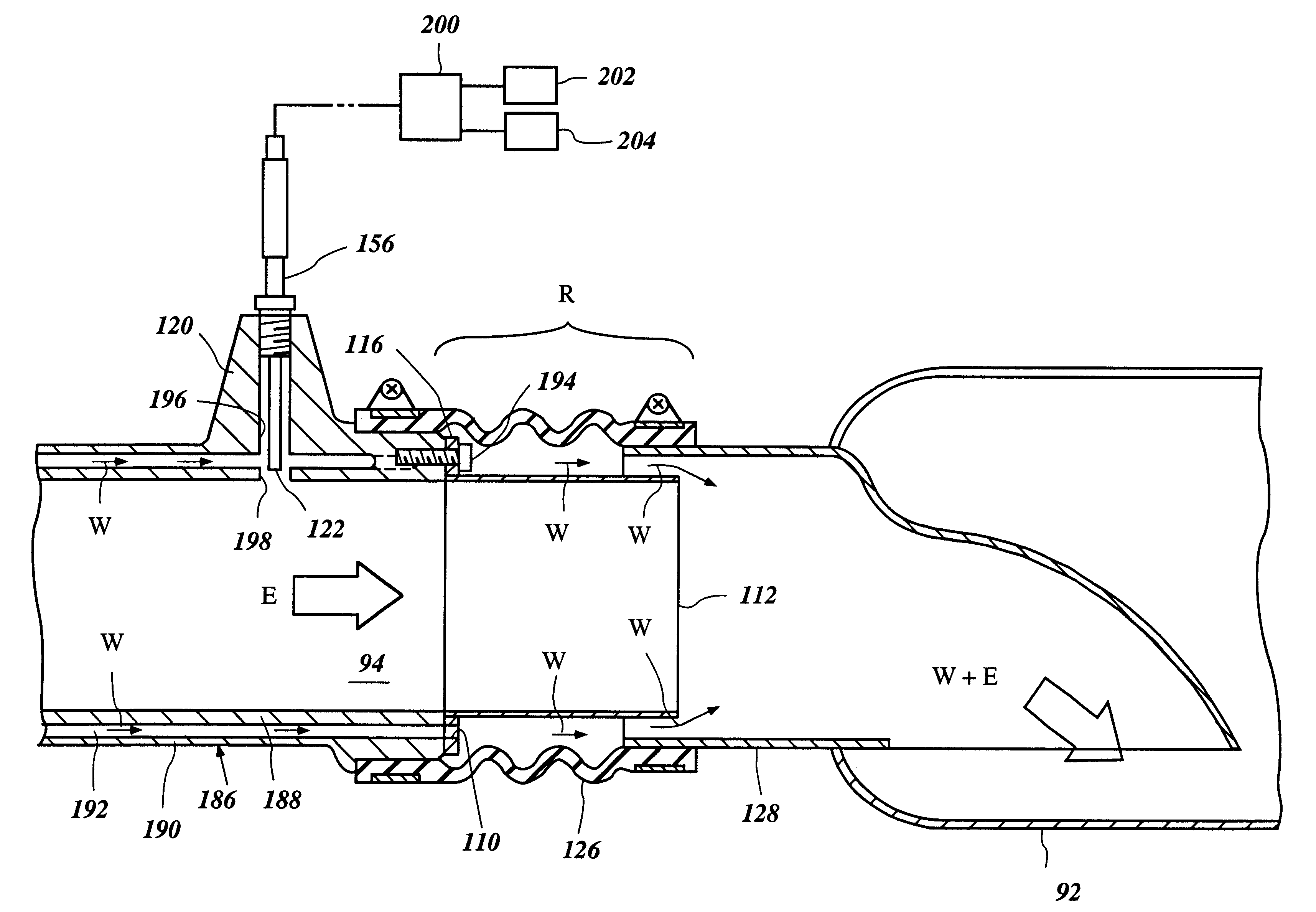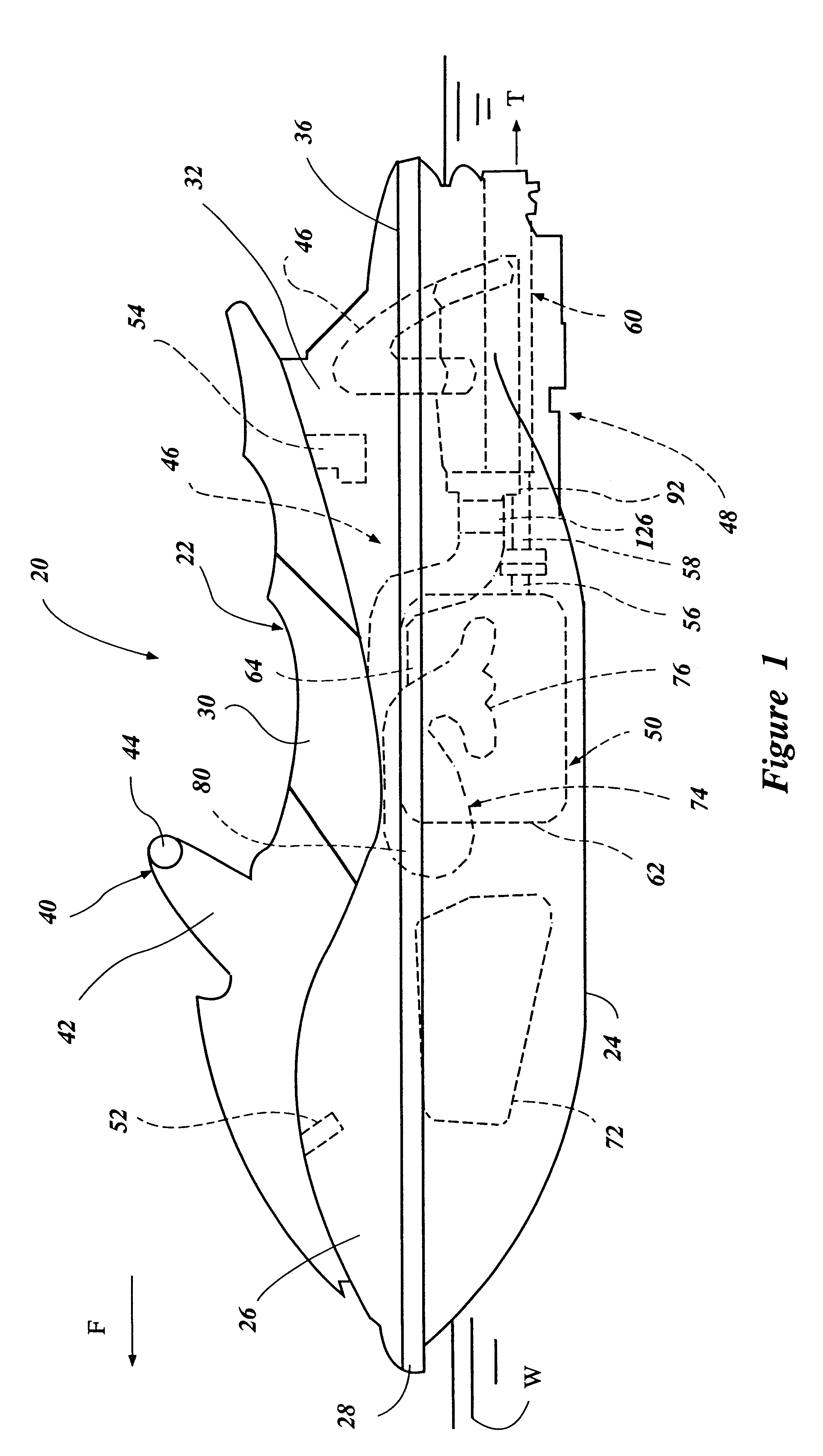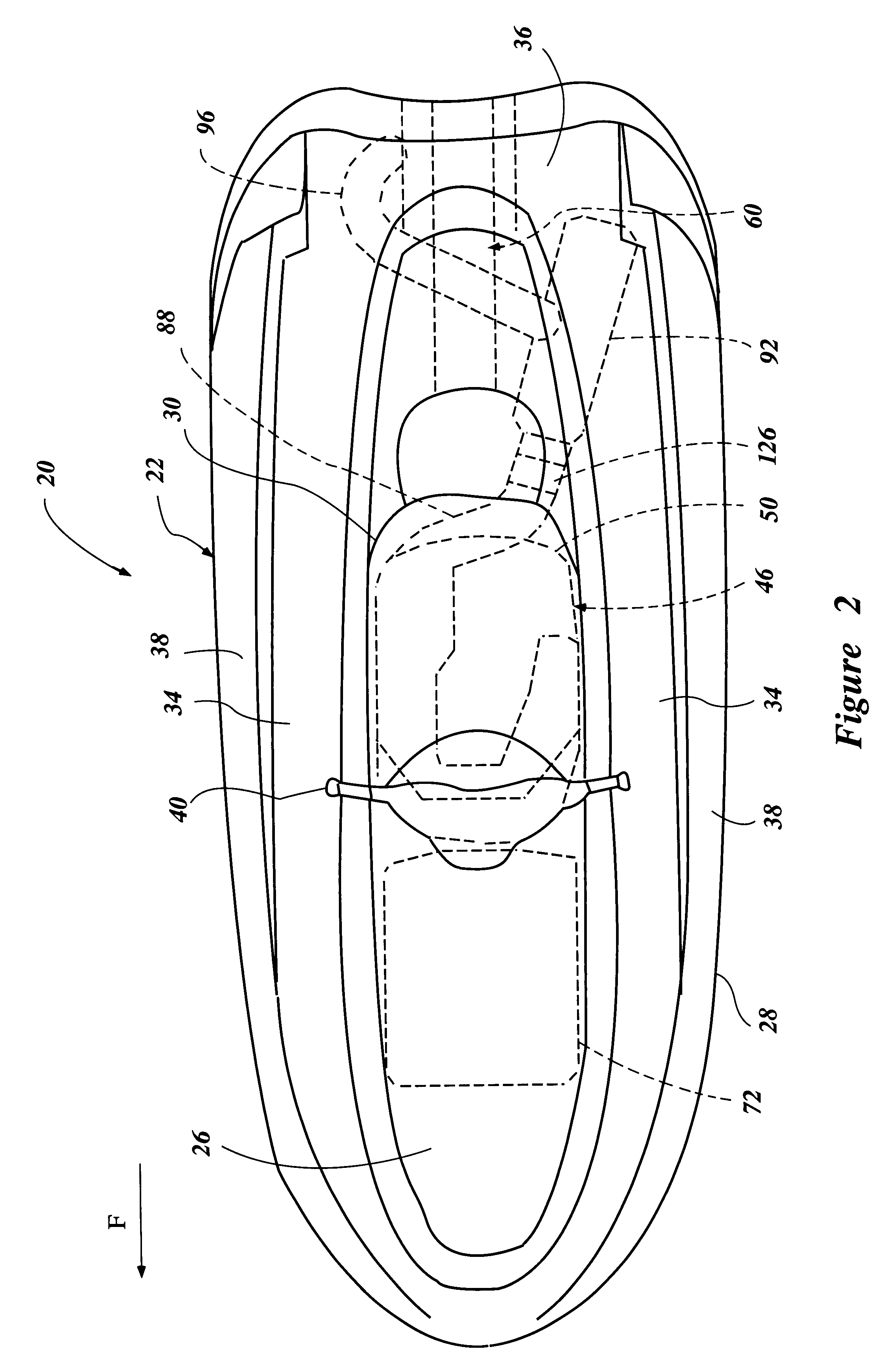Exhaust and control for watercraft engine
a technology for exhaust systems and watercraft, applied in the direction of propulsive elements, marine propulsion, vessel construction, etc., can solve the problems of exhaust leakage in the exhaust system, reducing the resiliency and and reducing the life expectancy of the coupling sleev
- Summary
- Abstract
- Description
- Claims
- Application Information
AI Technical Summary
Benefits of technology
Problems solved by technology
Method used
Image
Examples
Embodiment Construction
The present engine exhaust and cooling systems have particular utility with a personal watercraft, and thus, the following describes the engine exhaust and cooling systems in the context of a personal watercraft. This environment of use, however, is exemplary. The present engine exhaust and cooling system can be readily adapted by those of skill in the art for use with other types of watercraft as well, such as, for example, but without limitation, small jet boats and the like, as well as for use in other applications.
FIGS. 1 and 2 illustrate an exemplary watercraft 20. The illustrated watercraft 20 is desirably operated in a body of water designated by reference letter W in FIG. 1. In use, the watercraft 20 is propelled through the body of water W in a forward direction as designated by the arrow F in FIGS. 1 and 2.
The watercraft 20 is generally comprised of a watercraft body 22. The watercraft body 22 includes a hull 24 and a deck 26. A bond flange 28 is defined as the peripheral ...
PUM
 Login to View More
Login to View More Abstract
Description
Claims
Application Information
 Login to View More
Login to View More - R&D
- Intellectual Property
- Life Sciences
- Materials
- Tech Scout
- Unparalleled Data Quality
- Higher Quality Content
- 60% Fewer Hallucinations
Browse by: Latest US Patents, China's latest patents, Technical Efficacy Thesaurus, Application Domain, Technology Topic, Popular Technical Reports.
© 2025 PatSnap. All rights reserved.Legal|Privacy policy|Modern Slavery Act Transparency Statement|Sitemap|About US| Contact US: help@patsnap.com



